#environmental impact of construction materials
Text
Can Weird Things be Used as Binder in Concrete?
In the quest to enhance the strength and durability of concrete, researchers and engineers often experiment with a myriad of unconventional materials. The idea is to explore whether these “weird” substances can function effectively as binders, the crucial ingredient that holds concrete together. This article delves into the fascinating realm of concrete science, examining the potential of various…

View On WordPress
#alternative concrete binders#binder performance in concrete#concrete additive research#construction innovation#construction material science#durability of weird concrete additives#eco-friendly construction practices#environmental impact of construction materials#green building trends#organic fiber reinforcement#recycled concrete materials#structural engineering advances#sustainable building materials#unconventional concrete binders#wool in concrete
0 notes
Text
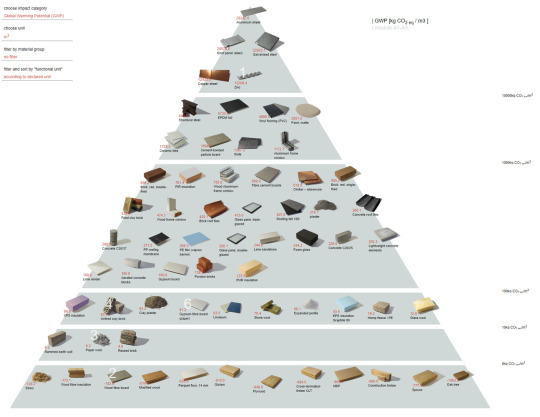
Environmental Impact of Building Materials | Matrix
Archdaily.com
#archdaily#building materials#environmental impact#co2#supply chain#building material#construction#materiality
16 notes
·
View notes
Text
Jamaica: Water Bottles and Construction
In countries filled with structures made out of brick and wood it is hard to believe that they can be made with anything else. Buildings are supposed to be sturdy and able to withstand anything from a clear day to severe thunderstorms.
There’s a reason why kings built their castles out of stone, and why the two pigs who built their houses out of straw and sticks had their houses destroyed. It’s…

View On WordPress
#Affordable housing#alternative materials#building#building techniques#climate resilience#community development#community empowerment#Construction#creative solutions#disaster resilience#eco-friendly#environmental impact#green building#green technology#houses#infrastructure#innovation#Jamaica#local initiatives#plastic bottles#poverty alleviation#recycling#resource efficiency#Samarpan#sustainable#sustainable development goals#upcycling#waste management#water bottles
0 notes
Text
when the British Empire's researchers realized that the cause of the ecological devastation was the British Empire:

much to consider.
on the motives and origins of some forms of imperial "environmentalism".
---
Since the material resources of colonies were vital to the metropolitan centers of empire, some of the earliest conservation practices were established outside of Europe [but established for the purpose of protecting the natural resources desired by metropolitan Europe]. [...] [T]ropical island colonies were crucial laboratories of empire, as garden incubators for the transplantation of peoples [slaves, laborers] and plants [cash crops] and for generating the European revival of Edenic discourse. Eighteenth-century environmentalism derived from colonial island contexts in which limited space and an ideological model of utopia contributed to new models of conservation [...]. [T]ropical island colonies were at the vanguard of establishing forest reserves and environmental legislation [...]. These forest reserves, like those established in New England and South Africa, did not necessarily represent "an atavistic interest in preserving the 'natural' [...]" but rather a "more manipulative and power-conscious interest in constructing a new landscape by planting trees [in monoculture or otherwise modified plantations] [...]" [...].
Text by: Elizabeth DeLoughrey and George B. Handley. "Introduction: Toward an Aesthetics of the Earth". Postcolonial Ecologies: Literatures of the Environment, edited by DeLoughrey and Handley. 2011.
---
It is no accident that the earliest writers to comment specifically on rapid environmental change in the context of empires were scientists who were themselves often actors in the process of colonially stimulated environmental change. [...] As early as the mid-17th century [...] natural philosophers [...] in Bermuda, [...] in Barbados and [...] on St Helena [all British colonies] were all already well aware of characteristically high rates of soil erosion and deforestation in the colonial tropics [...]. On St Helena and Bermuda this early conservationism led, by 1715, to the gazetting of the first colonial forest reserves and forest protection laws. On French colonial Mauritius [...], Poivre and Philibert Commerson framed pioneering forest conservation [...] in the 1760s. In India William Roxburgh, Edward Balfour [...] ([...] Scottish medical scientists) wrote alarmist narratives relating deforestation to the danger of climate change. [...] East India Company scientists were also well aware of French experience in trying to prevent deforestation [...] [in] Mauritius. [...] Roxburgh [...] went on to further observe the incidence of global drought events which we know today were globally tele-connected El Nino events. [...] The writings of Edward Balfour and Hugh Cleghorn in the late 1840s in particular illustrate the extent of the permeation of a global environmental consciousness [...]. [T]he 1860s [were] a period which we could appropriately name the "first environmental decade", and which embodies a convergence of thinking about ecological change on a world scale [...]. It was in the particular circumstances of environmental change at the colonial periphery that what we would now term "environmentalism" first made itself felt [...]. Victorian texts such as [...] Ribbentrop's Forestry in the British Empire, Brown's Hydrology of South Africa, Cleghorn's Forests and Gardens of South India [...] were [...] vital to the onset of environmentalism [...]. One preoccupation stands out in them above all. This was a growing interest in the potential human impact on climate change [...] [and] global dessication. This fear grew steadily in the wake of colonial expansion [...]. Particularly after the 1860s, and even more after the great Indian famines of 1876 [...] these connections encouraged and stimulated the idea that human history and environmental change might be firmly linked.
Text by: Richard Grove and Vinita Damodaran. "Imperialism, Intellectual Networks, and Environmental Change: Origins and Evolution of Global Environmental History, 1676-2000: Part I". Economic and Political Weekly Vol. 41, No. 41. 14 October 2006.
---
Policing the interior [of British colonial land] following the Naning War gave Newbold the opportunity for exploring the people and landscape around Melaka […]. Newbold took his knowledge of the tropical environment in the Straits Settlements [British Malaya] to Madras [British India], where he earned a reputation as a naturalist and an Orientalist of some eminence. He was later elected Fellow of the Royal Society. Familiar with the barren landscape of the tin mines of Negeri Sembilan, Newbold made a seminal link between deforestation and the sand dune formations and siltation […]. The observation, published in 1839 […], alerted […] Balfour about the potential threat of erosion to local climate and agriculture. […] Logan brought his Peninsular experience [in the British colonies of Malaya] directly within the focus of the deforestation debate in India […]. His lecture to the Bengal Asiatic Society in 1846 […] was hugely influential and put the Peninsula at the heart of the emerging discourse on tropical ecology. Penang, the perceived tropical paradise of abundance and stability, soon revealed its vulnerability to human [colonial] despoilment […].
Text by: Jeyamalar Kathirithamby-Wells. "Peninsular Malaysia in the Context of Natural History and Colonial Science". New Zealand Journal of Asian Studies 11, 1. June 2009.
---
British colonial forestry was arguably one of the most extensive imperial frameworks of scientific natural resource management anywhere [...]. [T]he roots of conservation [...] lay in the role played by scientific communities in the colonial periphery [...]. In India,[...] in 1805 [...] the court of directors of the East India Company sent a dispatch enquiring [...] [about] the Royal Navy [and its potential use of wood from Malabar's forests] [...]. This enquiry led to the appointment of a forest committee which reported that extensive deforestation had taken place and recommended the protection of the Malabar forests on grounds that they were valuable property. [...] [T]o step up the extraction of teak to augment the strength of the Royal Navy [...] [b]etween 1806 and 1823, the forests of Malabar were protected by means of this monopoly [...]. The history of British colonial forestry, however, took a decisive turn in the post-1860 period [...]. Following the revolt of 1857, the government of India sought to pursue active interventionist policies [...]. Experts were deployed as 'scientific soldiers' and new agencies established. [...] The paradigm [...] was articulated explicitly in the first conference [Empire Forestry Conference] by R.S. Troup, a former Indian forest service officer and then the professor of forestry at Oxford. Troup began by sketching a linear model of the development of human relationship with forests, arguing that the human-forest interaction in civilized societies usually went through three distinct phases - destruction, conservation, and economic management. Conservation was a ‘wise and necessary measure’ but it was ‘only a stage towards the problem of how best to utilise the forest resources of the empire’. The ultimate ideal was economic management, [...] to exploit 'to the full [...]' and provide regular supplies [...] to industry.
Text by: Ravi Rajan. "Modernizing Nature: Tropical Forestry and the Contested Legacy of British Colonial Eco-Development, 1800-2000". Oxford Historical Monographs series, Oxford University Press. January 2006.
---
The “planetary consciousness” produced by this systemizing of nature [during the rise of Linnaean taxonomy classification in eighteenth-century European science] […] increased the mobility of paradise discourse [...]. As European colonial expansion accelerated, the homogenizing transformation of people, economy and nature which it catalyzed also gave rise to a myth of lost paradise, which served as a register […] for obliterated cultures, peoples, and environments [devastated by that same European colonization], and as a measure of the rapid ecological changes, frequently deforestation and desiccation, generated by colonizing capital. On one hand, this myth served to suppress dissent by submerging it in melancholy, but on the other, it promoted the emergence of an imperialist environmental critique which would motivate the later establishment of colonial botanical gardens, potential Edens in which nature could be re-made. However, the subversive potential of the “green” critique voiced through the myth of endangered paradise was defused by the extent to which growing environmental sensibilities enabled imperialism to function more efficiently by appropriating botanical knowledge and indigenous conservation methods, thus continuing to serve the purposes of European capital.
Text by: Sharae Deckard. Paradise Discourse, Imperialism, and Globalization: Exploiting Eden. 2010.
#abolition#ecology#indigenous#multispecies#imperial#colonial#temporal#temporality#debt and debt colonies#tidalectics#archipelagic thinking#caribbean#interspecies#victorian and edwardian popular culture
159 notes
·
View notes
Text
~an introduction to ecobricking~

hello fellow solarpunks! i've been interested in ecobricking for a while but i recently invested some time into researching them so here's a guide! it's a responsible way to sequester plastic from the environment, but making them is slightly more involved than just stuffing plastic in a bottle, if you want to use them for construction or weight-bearing projects like furniture. I'm mainly using information from GoBrik, which had the most comprehensive guide, but feel free to comment or rb with supplemental information.
FAQ:
Isn't it better to recycle plastic rather than ecobricking?
There are many plastics, such as food wrappers or packaging, that can't be recycled and end up degrading rapidly. Ecobricking sequesters those kinds of plastics from the ecosystem and also reduces the surface area exposed, which limits plastic degredation over time.
How do you use ecobricks?
You can use ecobricks in many applications, from furniture to structures. The long-term environmental impact of using ecobricks is still speculated on, but responsible upkeep mitigates their potential environmental impacts, which are still far less than the impact that plastic would have were it not sequestered.
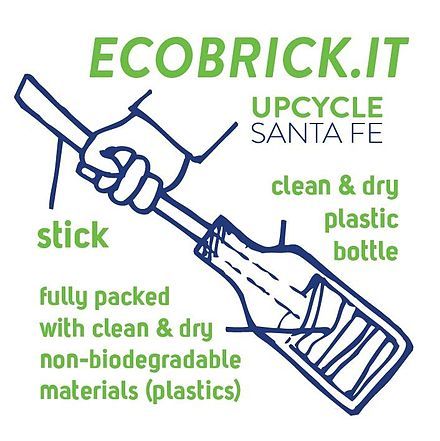
How To Ecobrick:
Find a plastic bottle. The bottles that you use for ecobricking should all be the same variety, which will help in any building projects that you may choose to use them for.
Find some plastic! Make sure to wash and dry your plastic, as any food residue or moisture could make your brick moldy or structurally unsound. You can cut up larger pieces of plastic, like food packaging (think bags of shredded cheese or frozen berries, or the plastic bags inside cereal boxes)-- just pack em in. If you want to be fancy, GoBrik recommends making the bottom layer of your ecobrick all one color, for aesthetic purposes later on. But it's really up to you. Please avoid putting biodegradable material, such as cardboard or paper, as well as glass or metal, in your ecobrick-- it'll affect the density and preferred composition. Plus, you can recycle those!
Calculate the density! This is the only part that involves math, I swear. You want to aim for a density of about 0.37 grams per milliliter; it shouldn't be under 0.33 g/ml or it'll be structurally unsound. It's also good to aim for a density less than 0.7 g/ml, or your bricks might be too heavy to move comfortably. The equation is just the weight in grams divided by the milliliters of the container you're using, so, for example, if you used a bottle than was 1250 ml, you would be aiming for about 475-500 g of plastic (including the bottle). (a kitchen scale is great for weighing, and you can thrift them pretty easily) Of course, if you're ecobricking to sequester plastic and not necessarily to build, you don't need to worry too much about the density, but if you wanted to donate your ecobricks to a project in the future I would encourage you to try to keep track of density.
Cap your bottle tightly, leaving 1-2 cm at the top of the bottle (basically, you don't want the cap to bulge, because it will make the cap degrade rapidly and crack). Label them with the density of the bottle (if it's relevant) and the date (so you know how long the brick has been around so you can maintain it if needed)-- nail polish works the best. Keep them out of the elements (especially the sun) and off the ground until you plan to use them.
There are tons of ways to use ecobricks! I'll link a few ideas below.
https://ecobricks.org/en/build.php
https://ecobricks.org/en/modules.php
anways, happy bricking! i'll post a picture of my finished ecobrick when it's done (hopefully not soon!)
Sources:
https://en.wikipedia.org/wiki/Ecobricks
https://ecobricks.org/en/how.php
89 notes
·
View notes
Text
Cars are just not very economic

I just had this discussion with someone and I just kinda feel the need to talk about it here, because it is closely related to the entire Solarpunk thing.
If you look at it from a purely economic point of view, cars are just not a very efficient way of transport.
Now, this argument has been made to death, really. And literally economists have been arguing about this for literal decades. Again, I was discussing it and looked up sources - and I found sources going back to the 70s. So, yeah, this has been discussed for at least half a century.
But... yeah. Speaking from an economic point of view rails are most economic, followed by busses. Only then there is the cars. (No data on water transport and air transport is a bit more complicated from this point of view.)
Now, why is this?
Roads are all in all more expensive than rails, especially in maintenance. If you look into construction costs, you will find kinda contradictory information on this. But per kilometer costs a kilometer of rail is about equivalent to a kilometer of a four-lane highway to construct. But while both need maintenance, usually roads need more of it. Because the wear and tear on a road is harsher than on a rail (due to more friction and just the fact that concrete is just not a very durable material compared to metal). Admittedly: High speed rail does push both construction and maintanance costs for railways up a good notch, making it more comparable to a seven lane highway. Mostly because of safety concerns.
While trains are more expensive than cars, they usually will be longer in use than a car and will drive many more kilometers during this time. Part of this is also, of course, that while trains are in use for hours each day, most cars spend the most of their life just standing in garages and parking lots. While the average car will get retired after about 150 000 to 200 000 miles, the average locomotive will last 1 000 000 miles.
This comes even more into focus, when you take into consideration how many more passangers or haul the average car will transport during those 1m miles. A single train car can carry up to 150 passangers - and often during rush hours trains will carry about 800 to 1000 passengers at once. While a car will carry often only one or two people at once.
Additionally obviously car infrastructure takes up much more space. Even if we are talking about countries with not as crazy "minimum parking area" restrictions as the USA. Cars need a lot more space than a train or even bus would ever need. And this space also carries costs with it.
And in the end we obviously still do have all the kind of costs that comes from the environmental and health impact of cars. Be it the air pollution, the water polution, and the fallout from having those concrete deserts the cars need in their infrastructure. And to this you can STILL add costs from everything having to deal with accidents and the like.
But yeah... Cars are just economically not very efficient.
So, even if you just cared about the fucking money... Investing in trains and public transport is actually a way better use of that money, than investing in cars.
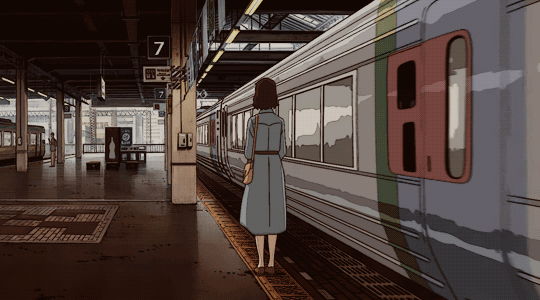
234 notes
·
View notes
Text
TikTok was where I learned about SHEIN. For a while my For You page, which had accurately identified my interest in fashion’s more material impacts, served me videos of sustainable fashion influencers decrying SHEIN’s wretched labor and environmental practices. The textile industry is the second-largest polluter in the world, they said, and of all the fast-fashion producers, SHEIN is by far the worst offender. SHEIN uses toxic chemicals in their clothing production; SHEIN mass-produces fabrics like spandex that never decompose (at this point an image would flash across the screen: an overflowing clothing landfill, or a mountain of discarded clothes in the Chilean desert so large it is visible from space); SHEIN exploits and endangers its factory workers. Employees earn $556 a month to make five hundred pieces of clothing every day, work eighteen-hour days, and use their lunch breaks to wash their hair — a schedule they repeat seven days per week with only one day off per month. A more nuanced TikToker might point out, briefly, that conditions in SHEIN factories are not necessarily unique, or that focusing on suppliers — rather than the larger systems of Western consumption and capitalism that create these conditions — is a fool’s errand, but the platform isn’t built for that kind of dialogue. I clicked on the comments and invariably read ones with several dozen likes saying, “I’m so willing to die in shein clothes.”
Before long I was watching SHEIN hauls. There are millions of them — the tag #sheinhaul has been viewed a collective 14.2 billion times on TikTok. In each haul, a woman rips open a plastic bag filled with smaller plastic bags filled with small plastic clothing. Sometimes the woman holds up each garment and narrates its merits, but often the clothes are disembodied, laid flat on a floor or a bed in an accidental stop-motion animation. A stretchy red skirt on a furry white carpet is replaced by a strapless watercolor bustier with a deep-V neckline. A zebra-print skirt is followed by a matching pink two-piece set, with a short-sleeve cardigan and miniskirt constructed from a fabric that looks like bubble wrap. Sometimes a haul is five pieces, and sometimes it is too many pieces to count. The garments appear and disappear in seconds, edited to the beat of a trending song. Rarely do we see the clothing on a body.
Usually brand familiarity accrues in a slow drip, building from obscurity to instant recognizability over the course of months or years as a designer’s work intersects with the zeitgeist and gains traction on social media. SHEIN was different. One day I’d never heard of the retailer and the next it was inescapable: in thousands of outfit videos, on millions of social media feeds. The clothes weren’t distinct or cohesive; what united them wasn’t style but price. All those SHEIN hauls entered my feeds with such ubiquity that they began to feel like they’d always been there. I’d opened a door to a new part of the fashion internet: a place where girls bragged about their ultra-fast-fashion purchases, delighting in the cheapness of the garments. Here, SHEIN was the obvious choice for new clothes. Why not, when you could buy on-trend pieces at lightning speed for less than the price of a cup of coffee?
It was uncanny to bounce between videos: here was a girl showing off her new halter, here was another girl giving a litany of reasons why it was unconscionable to buy clothes for so little money. Didn’t these TikTokers hear one another? But then again, how could they? “This is what we keep missing here in the whole conversation about sustainability in the industry,” Nick Anguelov, a professor of public policy from UMass Dartmouth, said to a Slate journalist writing about SHEIN in June. “We keep failing to understand that our customers are kids and they don’t give a fuck.”
65 notes
·
View notes
Text

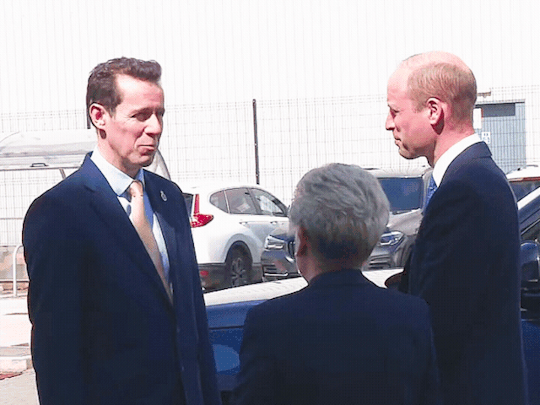








THE PRINCE DIARIES ♔
30 APRIL 2024 || NORTHEAST ENGLAND (1/2) : LOW CARBON MATERIALS
The Prince will be carried out engagements in the Northeast of England. He first visited, 2022 Earthshot Prize Finalist - Low Carbon Materials, in Seaham.
During his visit he saw firsthand how they make their cutting-edge, carbon-negative products, and heard about the impact that being nominated for the Prize has had on the company.
Low Carbon Materials was founded by three Material Science PhD students with the vision of becoming a world leader in low-carbon and environmentally friendly construction materials. They set out to develop products with the potential to drastically reduce emissions within the construction industry.
William visited LCM's Research and Development lab where he was shown how the company creates and tests concrete samples containing their flagship product OSTO®. He also saw a a demonstration of LCM's process of incorporating waste CO2 into their products.
#prince of wales diaries#prince of wales diaries 2024#NorthEast24#LowCarbonMaterials24#30042024#prince of wales#the prince of wales#prince william#william wales.#william prince of wales#british royal family#royalty#british royals#royals#brf#royal#british royalty#royaltyedit#royalty edit#royaltygifs#royalty gifs#my gifs#will gifs
55 notes
·
View notes
Text
Cannabis: A Multifaceted Plant for a Multitude of Uses

Introduction
Cannabis, a plant that has been a part of human history for thousands of years, is experiencing a resurgence in popularity as its myriad of uses become increasingly recognised. From its strong fibres used in textiles and paper to its nutritional and medicinal properties, cannabis has proven itself to be a truly multipurpose plant. This article will delve into the various aspects of this versatile plant and explore how it has been utilised throughout history and across cultures.
The History of Hemp: A Material with Unmatched Strength
One of the most well-known uses of cannabis is in the production of hemp, a material derived from the plant's strong fibres. These fibres have been used for millennia to create durable cloth, rope, and paper. The Vikings, known for their seafaring prowess, utilised hemp to construct sails for their ships, enabling them to voyage from Scandinavia to Nova Scotia. In the United States, Betsy Ross sewed the first flag from hempen cloth, and the Declaration of Independence was written on hemp paper. Even the now obsolete German currency, Deutsche Mark, were once printed on hemp paper.
The use of hemp extended beyond these applications, as seen in the Netherlands, where windmills were built specifically to crush hemp stalks. This demonstrates the importance of hemp in various industries and highlights the plant's incredible versatility.
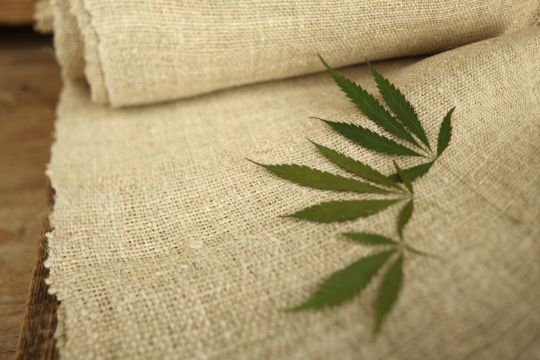
Cannabis as a Nutritional Powerhouse
While the strength of its fibres may have initially attracted humans to the cannabis plant, its potential as a food source likely played a significant role in its widespread cultivation. Cannabis seeds, or hempseeds, are packed with essential nutrients such as polyunsaturated fats, essential fatty acids, and proteins. These qualities qualify hempseed as a functional food, meaning it provides health benefits beyond basic nutrition.
For over three thousand years, Asian cultures have utilised hempseed as both a food and a medicine. Despite the prohibition of cannabis products in the United States, hempseed has been allowed for use in food over the last two decades. This highlights the recognition of its nutritional value and potential health benefits.

Cannabis Resin: A Source of Medicinal and Psychoactive Compounds
The resin produced by the cannabis plant is another aspect that has garnered significant attention due to its medicinal and psychoactive properties. The compounds found in cannabis resin, such as THC (tetrahydrocannabinol) and CBD (cannabidiol), have been the focus of breeding efforts to increase their production. These efforts have led to the development of various cannabis drug chemotypes around the world, with some cultivars producing only THC, others producing both THC and CBD, and a few expressing propyl THCV (tetrahydrocannabivarin) and/or CBDV (cannabidivarin).
The medicinal uses of cannabis resin have been widely researched, with evidence suggesting its effectiveness in treating conditions such as chronic pain, epilepsy, multiple sclerosis, and more. The psychoactive effects of THC have also led to the recreational use of cannabis, which has sparked debates surrounding its legalisation and regulation.

Environmental Benefits of Cannabis Cultivation
In addition to its myriad uses, cannabis cultivation offers several environmental benefits. Hemp plants are known to absorb large amounts of carbon dioxide, making them an effective tool in combating climate change. Furthermore, hemp requires fewer pesticides and herbicides than many other crops, reducing the environmental impact of agriculture.
Cannabis can also be used as a source of biofuel, offering a renewable and eco-friendly alternative to fossil fuels. Additionally, the fast growth rate and low water requirements of hemp make it a sustainable crop, capable of providing resources without causing significant strain on natural resources.
Conclusion
Cannabis is a truly remarkable plant, with applications ranging from textiles and paper to nutrition and medicine. As society continues to recognise its numerous benefits, it is likely that the cultivation and use of cannabis will only continue to grow. By embracing this versatile plant, we can harness its potential to improve our health, industries, and environment for generations to come.
#cannabis#cannabismedicine#cannabishistory#medical cannabis#cbd#feelgreatagain#cbdoil#budandtender#health#endocannabinoidsystem
99 notes
·
View notes
Text
If your city is a Brand, it’s already too late
Long post time. What is it that drives gentrification? Also, what is gentrification? Is it when a city gets blue hair and pronouns? No, it probably already had those.
Gentrification is the result of concentration of wealth in the hands of business owners, including landlords, over and above the hands of residents.
Let’s start with rent. Rent, like any good, is priced according to the laws of supply and demand. Supply of available rental housing is primarily determined by construction costs and estimated return on investment for new construction, and property management costs and estimated return on investment for existing units.
Breaking that down a bit, the higher construction costs get the higher the rent needs to be to break even on new construction. Construction costs include labor (which can always go down but you want it high for moral and practical reasons), materials (highly variable depending on the project) and bureaucratic costs. A bureaucratic cost is a cost that is based on how projects fit into the legal and practical environment, and are usually non-negotiable. Dig Safe, a program which requires three days of surveying local records before breaking ground, is an example where the function is to prevent crews from flattening a neighborhood by puncturing a gas main. Environmental Impact Statements, Fire Codes, Habitability Guidelines, and other regulations increase costs to projects. These programs are good and need to exist, but do stop smaller projects from happening at all because the capital investment required just to actually break ground on a new house might cost as much as the land and materials put together at which point you might as well build another 120$/sqft luxury midrise.
Property management costs for existing units are largely dependent on age and wear. A unit with no occupant is going to depreciate little, and may also appreciate in value. Depreciation and appreciation here are sort of unintuitive because they can happen at the same time. Imagine an old luxury sports car with a high resale price. Driving depreciates the value because it’s literal condition is poorer, even as the resale value goes up over time. The appreciation needs to beat both inflation and the value of depreciation for it to go up in real value. For companies with large capital holdings however, losses such as through the upkeep of empty apartment buildings are useful to a point because they reduce these organizations’s tax burdens. A company that makes a killing on the stock market only has to pay taxes if they keep it: if they buy houses they then don’t rent, they can claim they “lost” their stock market earnings with “bad investments” and then pay no tax while saving the real estate to rent later. Again, this favors the largest possible projects and the largest possible operators because small companies can be killed by an unprofitable quarter or 4 while large ones explicitly benefit from unprofitability in reducing their tax burden.
Expected ROI is the final piece of this, which affects both new and existing units. Every private developer and landlord wants to make as much money as they can, unless they are explicitly are renting as a service. An example of renting as a service would be families, who will rent to each other at favorable rates or for free, privileging people with large and/or wealthy families that are friendly with each other. Now, ROI is also subject to supply and demand. Everyone wants to build 120$/sqft luxury apartments but once everybody does nobody can sell/rent for those prices without setting a price floor and waiting for buyers to catch up. If you are a small developer, you can’t afford to do this. Your expenses will eat you alive. If you are a big developer, though, those expenses are offsetting the gains you make and serving to reduce you tax bill. Units at prices nobody can pay are effectively furloughed, meaning off the market, and, so long as they remain cheap to maintain, will remain that way, artificially restricting supply. It doesn’t matter if it’s for sale or not when it’s at a price you can’t afford. (Sidebar, anyone who tells you that the minimum wage depresses hiring because it artificially restricts demand is lying to you. It’s not strictly false, but like the above it’s a multi-variable equation and blanket statements about cost of labor are aimed at killing wages.)
What this alludes to also is a need for greater income equality. In order for rental to be a competitive option with furlough, not only does the price of furlough have to be increased, the real value of wages have to be increased in order to create opportunities for people to splurge. This is a twofold strategy, of both increasing the rewards of putting units on the market and increasing the costs of keeping them off. If real wages barely cover cost of living, or don’t cover cost of living, nobody can realistically spend more real wages on rent regardless of the percentage of their income it is. (Real wages here refers to the political power implied by dollar wages. A dollar is really worth whatever it can be exchanged for, whether that is a candy bar or a square inch of a 144$/sqft condo) The real value of everything except time and land are also constantly going down because of constant improvements in manufacturing. The cost in acres of land and hours of labor of a pound of beef, a bolt of cloth, or a pint of beer have dropped dramatically in the last century. Unfortunately, land is one of the few things that remains in marxist terms uncommodifiable, because it cannot be fully abstracted from the physical properties that make it valuable and we can’t make more of it just by making a better machine. This means that as the real value of things goes down because of supply and demand, the value of land only goes up because the supply is hard capped. If the value of everything under capitalism must go down because of increased production, while the value of capitalist assets must go up, or the system collapses, it makes sense that land would become a fixed point in that equation, the marxist speed of light observable from all reference points. The best approximation of land as commodity is, what else, apartments, which make available as living space the empty air above us. Because production never stops, the value of everything but land must go down. Therefore, as time passes, the price of land, and hence the price of housing, must tend upwards. Therefore, in order for housing to remain affordable, real wages must grow. This is the opposite of what is currently happening, as real wages have gone down for decades.
This income inequality which is one facet of capitalism is not new. For as long as people have lived in urban areas there have been issues between the abject class, the working class, the ruling class, and the professional class, a four part distinction I will seriously argue for in opposition to a lot of marxist theorists. The ruling and working classes ought to be familiar, or at least self explanatory. However, the other two classes I identify, the professionals and the abject, are useful to this analysis because they fill both a racial gap in the primarily marxist analysis I put forward and identify the two most likely groups to rent, which is to say the worker who works to produce but owns without governing and the professional who works to govern but does not own. The ruling class both governs and owns, but its court is full of courtiers who are there to push various agendas from within the rule of law without per se producing. Likewise, the working class pensioner exists in opposition to the abject who is denied the opportunity or the resources to be productive explicitly as a means to manufacture a threat against which inter-class solidarity between the workers and the rulers is developed. The textbook nazi conspiracy theory about “elites” doing a great racial replacement picks out perfectly what I mean by both the racial character of the professional and the abject and their utilization to foster solidarity between your plumber uncle and Elon Musk. This is relevant to both the broad theme of gentrification and the narrow theme of rent because gentrification is a wedge issue that divides the working class and the professional class far more than its impact on any other. The working class’ disidentification with doctors, lawyers, PMCs and other yuppie types, as well as the professional class’ disidentification with union politics, illegalism, and radicalism in general is brought to firecrackers in virtually any conversation about gentrification which seems in passing to be more about tapas bars than about real politics. Likewise, these groups shared distrust of and disdain for the abject, who are explicitly labeled by the state as constitutionally guilty, is the basis for the very broken windows policing strategy that empties neighborhoods of minorities regardless of class. The Rent is Too Damn High, and excluding homeless people from the “working” working class is a big part of how we got here specifically because the interests of small time owners and small time government functionaries, carried to their conclusions, are necessarily self defeating. These two groups eliminate the presence of the abject from their spaces at their own financial peril.
In addition to class, there is also a specific historical movement that is crucial to the understanding of gentrification as it exists, which is the movement of factories in search of cheap labor. The United States is not a good place to find cheap urban labor. You build a factory and suddenly everyone complains about air quality and labor violations and you can’t just kill them because everyone has lawyers. You kill one (us citizen) organizer and the NLRB is trying to get you in court for intimidation. What’s the country come to? But a shipping container costs a quarter cent per mile and the goods aren’t perishable so you go to Guangzhou or Cape Town where you can kill union bosses in peace. But for the American city, that’s a loss of what once made land prime real estate. What jobs can replace the insatiable demand for labor that a 24 hour paper mill once produced? Service labor, which crucially is site specific and therefore not outsourceable, is what the US has predominantly turned to. (and arms manufacturing which is not outsourced for very different reasons) However, service labor is only in demand if there is already a stable population that can be served, which requires a constant influx of capital holders in demand of service. This is why Airbnb exists and is hollowing out rental availability, why Boston as a college town is the way it is, and why there are in fact so many damn tapas bars. Fred Salveucci talked about being able to go north of the expressway in the 70s and being able to get a plate of mac and beans for half a buck. I went looking for a 5$ slice of pizza on my lunch break today around Government Center and found two places that were boarded up and ended up spending 20$ at Chilacates. Cities are being slowly turned into Cancun, complete with the fences to keep out the homeless.
What can be done about this? Obviously the factors we’ve discussed that favor consolidation of housing are mostly either contained within a gordion’s knot of tax policy or intrinsic to capitalism/goods as commodities. But, given that we narrow our objectives to making the rent lower, some obvious weaknesses jump out: increasing the cost of vacancy forces units out of furlough, because companies are no longer able to justify the losses, and increasing real wages increases the availability of capital for workers to spend on rent. These are the prongs I talked about earlier.
Legal means to pursue each prong exist. Both a minimum wage and a maximum wage, depending on their implementation, can potentially increase real wages, and vacancy taxes directly increase the costs of vacancy. The government can also ignore the market and directly mandate maximum rents within certain parameters. This tends to decrease the long term supply of housing for the reasons discussed at the outset, given that if the revenues from house building don’t cover the costs of building, less gets built. However, any political movement that exists exclusively within the white lines of the law fails to genuinely threaten change. Landlords, like bosses, break the law constantly with the impunity that a lawyer provides them against consequence. This is why a healthy dose of illegalism is an important part of any effective political movement. The most direct action one can take is property occupation, or squatting. Squatter’s rights are nearly non-existent in the United States. The most leeway that any state grants to any unknown persons occupying a dwelling is 60 days notice to vacate the property, and there are states that allow no notice evictions or lack statutes governing squatting at all. Every single state regards the occupation of owned property as trespassing, meaning most kinds of squatting are prosecutable offenses. However, squatting, even temporarily in ways that don’t expose the squatter to liability provided they don’t get caught, can seriously impact the value of properties. You have heard of rent lowering gunshots. This is the serious version of that. At the same time, illegal action needs legal defense, both in terms of non-compliance with police to protect those willing to take illegal actions from arrest and in terms of legal, 1st amendment protected disruption to keep focus on the issue. The most effective movements have a radical wing and a institutionalist wing who do not acknowledge each other but share the same tactics and objectives.
If you are housed, you need to be willing to protect and support homeless people because they are your front line. Start or join an Occupy movement, where they are your peers in occupying a public space illegally in a way that is too public to prosecute. Give to people on the street, and smash anti-homeless architecture if nobody is watching. Be willing to distract cops if you see someone doing something dodgy so they can get away. Remember that following the law is a tactic, and so is breaking it.
The case for this being on my transit blog is arguably weak, but I felt compelled after a particularly hateful experience looking at facebook memes about homeless people on the T. You should want those people there. You should want those people breaking down the doors of luxury apartments and setting up shop. You should want them keeping your city safe because the cops you hire to separate you from them will train their guns on you next.
And for gods sake, don’t let your city become a brand. Branding is marketing. Branding is clean, and bloodless, and a gloved hand around your throat that leaves no fingerprints.
23 notes
·
View notes
Text
Basalt Fiber Reinforcement in Construction: A Sustainable Paradigm Shift
Introduction
In the contemporary construction landscape, a notable shift towards sustainable and eco-friendly building materials is underway. Among the alternatives gaining prominence is basalt fiber reinforcement, positioning itself as a compelling substitute for traditional steel reinforcement. This transition is fueled by a collective desire to reduce environmental impact and elevate the…
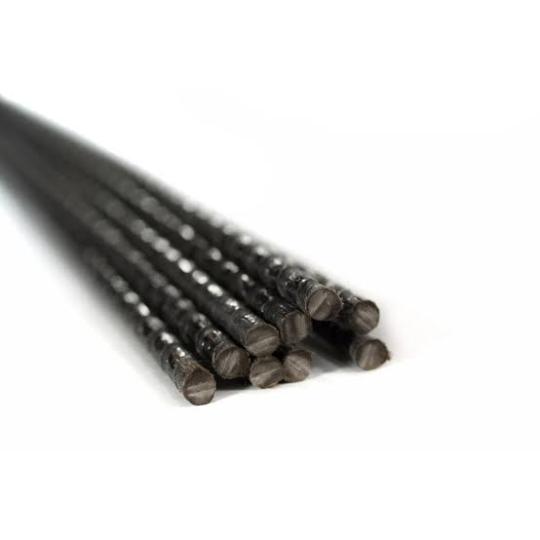
View On WordPress
#alternative to steel reinforcement#basalt fiber applications#basalt fiber properties#Basalt fiber reinforcement#basalt mesh in concrete#BFRP composites#construction industry sustainability#corrosion-resistant materials#durability in construction#eco-friendly building#environmental impact of construction#future of construction materials.#green building practices#lightweight construction materials#seismic resilience in buildings#steel replacement in construction#strength-to-weight ratio#Sustainable Construction Materials#sustainable structural design#thermal insulation in construction
2 notes
·
View notes
Note
Hello, I'm sorry for bothering you, I know you usually make thread about the avengers but uh my friends ask me if what Thanos did was reasonable for yk killing 50% of the population and I wanna say no but I know I'm probably biased, so if yk I could read any thread about that or someone else opinions about that, it would be nice..
Hi! You can bother me anytime, no problem at all.
Sorry, I don't have any saved threads on this topic, I can only give my opinion.
So, was it reasonable? Not really. That's why people called him the "mad" titan - he was obsessed with a dangerous and unreasonable idea of universal mass slaughter, which could not (as usual with such things) solve any real problems. Because he wasn't targeting the cause - "lack of resources".
This way, killing 50% of all living beings would create at least 3 major issues (and I'm not even talking about psychological implications):
1) those 50% will be back soon. Because the living things that are left will produce offspring and if there are enough resources (that's why Thanos did it, right? to give people more resources by reducing the number of people) - they WILL produce more children. It won't be long before the population of living creatures returns to this 100%. So it's pointless.
2) The idea itself came from Malthusian theory: population growth is exponential, and the growth of food supplies or other resources is linear. There is a problem with the theory: while it is realistic and possible for population to outgrow resources, the idea that the supply of resources is linear is incorrect. With economic growth and scientific discoveries we get more resources. Thanos didn't know or ignored that, just like the first point.
3) Thanos included animals and plants in his 50%. Animals and plants are also resources. They are food, construction materials, energy sources, oxygen producers, etc. Thus, he only further reduced the supply of resources. It would also create a serious environmental problem because some creatures reproduce faster than others. For example, let's say we have a species of insect whose population doubles every year. They eat tree leaves. Trees take many years to grow. Thanos reduced the number of insects and trees by 50%. In 2 years we will get 200% of the insect population and approximately the same 50% of trees.
And let's not forget how bad the impact of a lack of O2 would be on the atmosphere due to fewer trees.
In Thanos' "defense" - his motivation is actually deeper and more mythological than just one-time decimation. I'll explain later what I mean.
13 notes
·
View notes
Note
Adding my two cents here, hope you don't mind... The entire synthetic vs natural fiber argument is really reminding me of the plastic straw debate.... And I feel like the arguments are ignoring the nuance of the situations. Would I love if everything everywhere could be natural and biodegradable etc etc? Sure! Ofc! Except when degrading is what you DON'T want. I need to drink with a straw sometimes due to a bunch of personal health and sensory reasons. You know what sucks? Finding the fancy paper straw the cafe gave you has started to degrade part way through your drink. Or going somewhere that doesn't have straws at all. And personal stainless steel straws are a sensory nightmare!
Regarding clothing, I'd rather have a high quality polyester skirt that I can where over and over for years than a cotton skirt that will, given the material, eventually wear down regardless of how you care for it. I have synthetic blend shirts in my closet that I've had a literal decade and that I still wear! And I've had plenty of natural fiber clothes become sensory hell that I maybe got 3 or 4 wears out of. Polyester and other moisture wicking blends are also the best options for exercising and camping, especially if you have a tendency (like me) to overheat and oversweat. Cotton takes ages to dry out and doesn't breathe nearly as well.
And none of the natural fiber arguments ever seem to take the environmental costs to produce those natural fibers into account. A lot of the time they require a lot of water to grow and maintain on land they're likely not native to, planted in ways that push native plants and animals from their own environments. How is that necessarily better?
There are pros and cons of both fabric types. And ignoring that in favor of purely natural fibers can have negative impacts on people who may not have other choices. Like disabled people. Fat people. Poor people. People running small businesses. I promise, those of us that fall into any or all of those categories who are also environmentally conscious have looked into alternative options. And if we've gone back to synthetics? It's because we don't have one or we've weighed our options and came to the conclusion that actually, synthetic IS the more viable option.
When it comes right down to it, I think it's how we treat the garments and how long we continue wearing them that makes a difference, not what the materials are. Fast fashion is the problem. Not synthetic material itself.
I'm GLAD you provide high quality, durable, ethically sourced synthetic material skirts made in sizes and patterns we can't get anywhere else, all at a relatively affordable price point. Thank you!
And I apologize this is so long I just think, in this instance, the arguments can be a bit ridiculous sometimes. 😅
this is another facet and honestly part of it i just haven't had the energy to address. there's a lot of nuance to a situation that is often treated without nuance. you mentioned straws, which i think is a good comparison, but to me it really reminds me of the big push towards veganism a few years ago that completely overlooked labor concerns and that these "superfood" or alternative grain fads were incredibly destructive to the communities that relied on those foods as staples.
anyway that's a whole other issue with its own host of difficulties that i'm really not equipped to dig into haha
but yeah the quality in the construction of a garment and how it's treated (i.e. if it's worn for years or discarded after one use) bare way more impact on the environment than people realize.
the problem is, it is a lot easier and more profitable to sell people on changing WHAT they consume (natural vs synthetic) rather than HOW they consume.
105 notes
·
View notes
Text
moral OCD part 2
the conclusion I've tentatively reached is that the important thing is being a kind and decent person to the people around you.
that it's a whiny privileged take to be too fastidious to use the power available to you
that all living things hustle for survival and eat each other to do so
that it's not evil to be a manager or a landlord instead of an employee or a tenant, that it all depends on how you treat people.
I think it's possible to play the game according to the current system and chase material success while also, idk, supporting increased worker's rights and environmental protections even when they impact The Bottom Line.
I still feel morally weird about the stock market and the prison labor and the complicity of it all
But even if I did give everything away and go live in an off grid shack, genuinely what would that even accomplish? I'd be largely miserable and also intolerably smug, and I know i said I'm not Christian but also it's baked into my brain and pride is also a sin
I just.
Still struggling with this.
Still wondering how you construct an internally consistent set of ethics without going mad or becoming intolerable
14 notes
·
View notes
Text
Complex Trauma, Angband and Sleep
Other relevant posts: cultural views on sleep and nightmares, more nightmare thoughts , states of consciousness
I have some others too that I will find and add, it’s one of my favorite areas of trauma related world building because altered states of consciousness, nightmares and nightmare lore, and body/mind connections are some of my favorites!
(like my previous posts I use Maedhros and Húrin as examples as well as giving general information)
Angband world building and aftermath of captivity masterlist
Torture, especially in the deliberate and political sense is designed to eradicate the victim’s sense of self by, among other things, stripping away one’s basic physical needs (food, water, hygiene, rest,) and one’s basic emotional needs (safety, comfort, belonging, privacy, hope, and identity). It also seeks to damage the relationship that the victim has with these needs.
Sleep in Angband is profoundly disrupted. Prisoners frequently find themselves worked to the point of exhaustion with a completely inadequate environment for rest.
As one can probably guess getting a good night’s sleep in Angband is difficult. If someone sleeps dreamlessly through eight or nine hours it’s likely because they’ve been sedated during a procedure of some kind (Of course, few truly care about pain but work generally comes before sadism. There are instances where it’s more prudent to completely sedate a victim in order to get better results)
My posts that break down sections of Angband will have some detail on various sleeping conditions but generally, for the elves of Angband, blankets and cots are a rare luxury and the only real beds belong to the higher ups. Most sleep in large chambers on the floor with little protection from cold or heat. If they are allowed to keep what clothes they use for work, these might be utilized as a pillow or sometimes shared between a few to form a nest of sorts.
Specifically, thralls in the mines, kitchens and forges sleep in large, bare communal rooms with little to no blankets. Many blankets in the fortress come from raids or taken from prisoners upon their arrival. Others are made within the fortress with a combination of fiber materials. Blankets are a common ‘reward’ by higher ups and those who have them are likely to receive suspicion from their peers as are any other signs of…however unwanted…favoritism. The mines are especially cold although the chambers near the kitchens and forges are much warmer. Like with the starvation games I’ve spoken about, forcing prisoners to ‘earn’ blankets in various ways is a pass time of some of the higher ups.
Signs of exhaustion let alone voicing it is often highly punished in these places as well. Prisoners, including former prisoners, learn to ignore their own tiredness which can lead to further physical and psychological distress, lasting long after rescue or escape
I headcanon that Melkor has servants who were originally Maiar of Irmo and of Mandos and this aids him in both preventing certain elves from passing to the Halls and from information or even comfort being given in the form of dreams as well as the creation of illusions and induction of sleep and unconscious states.
Note: I do not believe all elven dreams come from Irmo, many are organic or environmentally created. There are even more categories of elven dreams as human ones.
He was able to persuade several Maia of Irmo and Námo to serve him early on, while Utumno was still in construction. These Maia serve him in vital ways, preventing most true dreams in Angband and maintaining the borders that prevent elven Fëar from fleeing. This has a permanent impact on Maedhros’s dreams following his rescue as well as the dreams of any other escaped prisoners.
The post about routine and time explains a bit further but there’s deliberately an environment of confusion created for the thralls of Angband. Any schedules, when there is one at all, is only known to Mairon and a few of the other higher ranking Maiar. For many of the slaves in the mines and forges, cycles of work and sleep are created among themselves, not by their overseers who would be quite willing to work them to death by exhaustion in times when the mines are full.
The effects of sleep deprivation can be devastating; psychological disturbances, altered cognitive abilities and processes, prolonged physical issues and more.
Insomnia, disrupted sleep cycles, sleep paralysis and night terrors, chronic exhaustion and inability to reach deep sleep, sleep actions (walking, talking, etc) and fear of sleep or tiredness are all examples of symptoms that might be experienced by prisoners both during and after their captivity.
For specific examples, Maedhros suffers from nightmares, sometimes violent ones where he fights, screams or argues, or sleepwalks. His quarters are isolated so most instances of his sleep talking go unnoticed but a few healers, guards and family members have been left feeling cold, trying not to put meaning into the little snatches of speech they overhear at his bedside, sometimes in languages they do not know. He is also prone to extreme agitation if woken from naps or half sleeping states and relatively soon after his return to his brothers’ camp, begins to avoid these. He is extremely private about his sleeping routine. There are practical issues too; sleep and remaining in place can reawaken old pains in him, cause numbness and discomfort in his limbs, and disorient him.
Now for Húrin again. Like with food and water, we are given a decent insight into Húrin’s sleep post Angband in “The Wanderings of Húrin”. He suffers frequent nightmares and often wakes in disoriented states, at one point drawing a blade upon the two men who discovered and woke him. He also suffers dissociation and appears to walk “as one in a dream”, having states of confusion and agitation even long after waking.
He does not live long enough to ever develop an effective sleeping routine.
#the silmarillion#maedhros#Húrin#the children of húrin#in the iron hell#musing and meta#post Angband#the wanderings of húrin#the wanderings of húrin
34 notes
·
View notes
Text
A system prioritising the overcoming of low levels of material wellbeing and productivity levels, and usually coming out of peasant patriarchal societies and often also colonial oppression (among other major disadvantages), all the while being militarily invaded and/or besieged, creates conditions not exactly conducive to the development of egalitarian social structures and environmentally constructive impacts. In these historical conditions it is a marvel that there were any successes in improving standards of living, raising environmental standards, engaging in reforestation, reducing or preventing waste, pre-empting consumerism, developing recycling programmes and attaining high volumes of recycling, improving access to education, providing free and universal health care, guaranteeing full employment and job security and even setting up lasting conservation areas, among other major feats. Add to this the development of cutting-edge social practices and policies like gender parity efforts in Burkina Faso, reconciliation and pacification methods (even if fraught with violence) in Mozambique, revolutionary applications of agronomy in Guinea Bissau and the Cabo Verde Islands and world-renowned successes in space, biomedical, health, conservation, engineering, ecology and biotechnology research and applications in the USSR, Cuba and the PRC, and the record is even more impressive.
Salvatore Engel-Di Mauro, Socialist States and the Environment: Lessons for Eco-Socialist Futures
40 notes
·
View notes